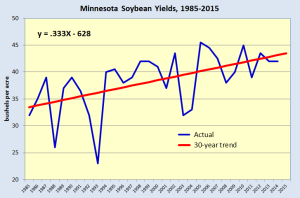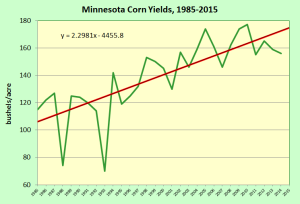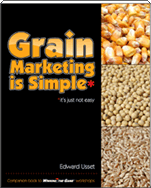 Yesterday I read an article from The Globe and Mail titled, “Kraft, Mondelez accused of manipulating prices of wheat used in Oreos.” The article was written by Michael Babad and you can find it here. You can find the CFTC press release here.
Yesterday I read an article from The Globe and Mail titled, “Kraft, Mondelez accused of manipulating prices of wheat used in Oreos.” The article was written by Michael Babad and you can find it here. You can find the CFTC press release here.
As a former futures trader and hedger who worked for a large food company, I take a particular interest in this topic. To have the CFTC (the Commodity Futures Trading Commission) accuse you of price manipulation is pretty serious stuff. Allow me put a little perspective around the numbers and the allegations.
The Toledo flour mill, owned by Mondelez Global LLC, is one of the largest flour mills in the world, with a daily milling capacity of 31,000 cwts of flour per day. My Sosland Grain & Milling Annual indicates that all of that capacity was dedicated to milling soft red winter wheat – the type of wheat used to produce low protein flour favored in the production of cookies like Oreo, Chips Ahoy, etc. Assuming 2.3 bushels of wheat per cwt of flour, and a mill running 310 days per year (normal industry standards), the Toledo mill processes over 22 million bushels of SRW wheat each year. The article I’m reading says “It [Kraft] uses about 30 million bushels of wheat a year for products like Orea, Chips Ahoy, Ritz, Triscuit and Wheat Thins. And the bulk of that wheat, generally sourced in Ohio, Indiana, Michigan and Ontario, is milled in Toledo.” Twenty-two million bushels is the bulk of 30 million bushels, so my math is in agreement with the facts put forth in the article.
Here’s where I am confused and need clarification. To quote the article (which appears to be quoting from the CFTC report), “The CFTC alleges the companies bought six months’ worth of wheat futures amid a rise in costs in 2011, but never planned to take delivery, the goal being a drop in prices on the cash market.” Call me confused with the statement that the company “never planned to take delivery.” I don’t know of any commodity buyer – buying futures contracts to hedge against higher input costs – who would actually want to take delivery on the futures contract. When a buyer of commodities buys futures contracts, they do so to hedge against higher prices, not to take delivery. General Mills (another large food company) for example, may choose to buy wheat, sugar, or soybean oil futures to hedge against higher food input costs. I can assure you that when they buy these contracts, they have absolutely no intention of “taking delivery.” The same can be said of a large airline buying crude oil contracts to hedge against higher fuel costs. Hedging is, by definition, taking a position in the futures market as a temporary substitute for a later transaction in the cash market. Like any other hedger of flour costs, once the long hedge is in place, they would later buy cash wheat to mill, and offset their long futures position as the wheat is purchased.
The article also says, “Kraft also held futures positions above the speculative limits, according to the complaint.” In my mind, Kraft sounds like a hedger, buying wheat futures to hedge against higher input costs. They are said to have bought $90 million of wheat futures. $7 futures ruled in 2011, so $90 million in futures equates to about 13 million bushels – less than half of the 30 million bushels used each year. Clearly, I may be lacking some important details here, but an ownership position of about 40% of your annual usage is, at best, modestly aggressive. I am aware of examples of food companies using futures markets to secure costs on inputs for as much as a full year out. Whether or not that exceeds speculative limits gets into the CFTC definition of hedging. This may be a tricky question. A large merchandiser of SRW wheat, with millions of bushels in storage (and physical proof of the holdings), can legitimately sell an equal amount in the futures to hedge their ownership. A food company buying futures is hedging anticipated sales in the future, and I simply don’t know how the CFTC approaches such anticipatory hedges. All I can say is that food companies regularly buy futures contracts (or a variation with options) to control input costs.
One more quote from the article and the CFTC document. “In developing the strategy, Kraft, acting through certain of its procurement staff and certain senior management, intended that the futures market would react to its enormous long position by increasing the price of the December 2011 futures contract while reducing the differential between the December futures price and the price of the cash market wheat.” This comment speaks to a basis play on the part of Kraft (and, actually, the desire may be to increase – not reduce – the differential between futures and cash, but it depends on whether the basis is positive or negative). By owning futures, Kraft is, in essence, short the basis. The quote seems to indicate that Kraft was manipulating the basis. To be clear, they would benefit from a widening basis – lower cash prices relative to the futures price. Here I can only say that I traded the spring wheat basis for a number of years, and I have no idea how anyone could think they would manipulate the basis. Anticipate a lower basis? Yes. Put yourself in a position to benefit from a lower basis? Yes. Manipulate? Please tell me how – what I’ve read so far leaves me in a fog.
One final thought. I don’t know how Kraft is structured. I once worked for a large miller, which was itself a small part of a large food company. I worked for the milling division which had its own P&L. The procurement function was a completely different part of the company. We used futures contracts every day to hedge our risks in the milling division. The procurement group also regularly used futures contracts to hedge flour costs. There was remarkably little coordination and communication re futures positions between the groups. Was the Toledo mill operating separately from a procurement function in Kraft? I don’t know the answer, and I’m not sure if it makes a difference.
My readings so far have left me with many more questions than answers. Stay tuned.
















Recent Comments